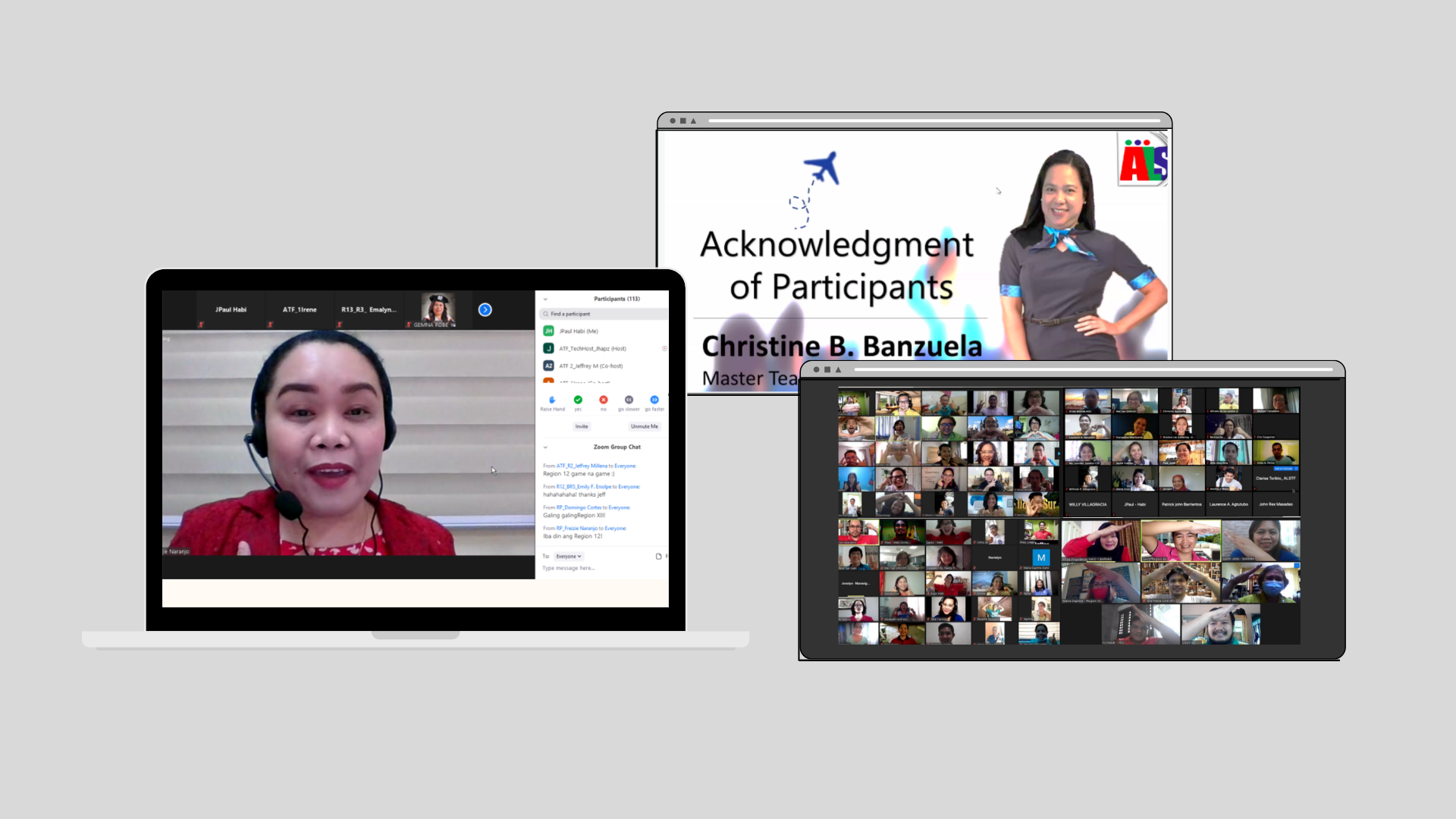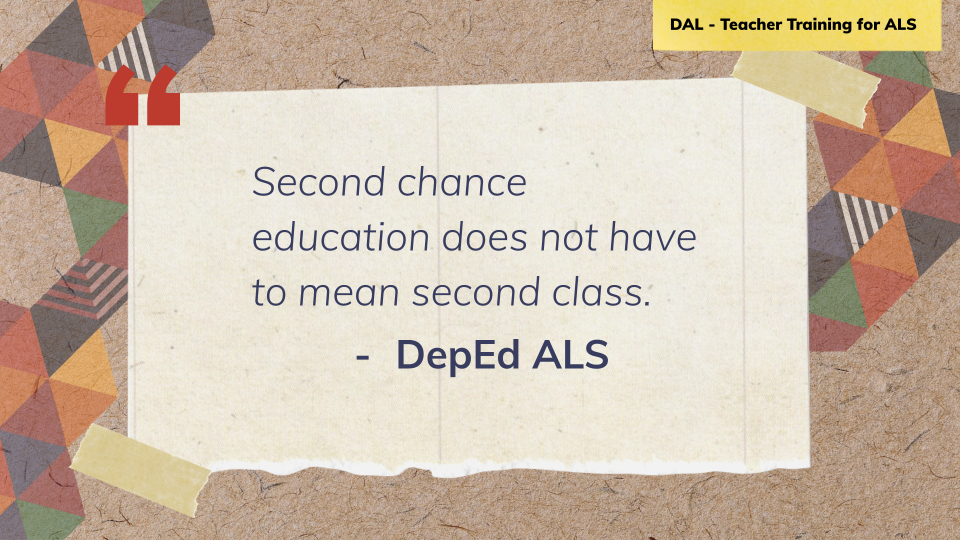These were some of the first online workshops that Habi facilitated over the 2020 community quarantines. Throughout the workshops, we tried to stick to the following principles:
- Kaya (Inclusive and considerate)
- Masigla (Active and participatory)
- Sagana (Substantial and innovative)
- Mahalaga (Relevant and purposeful)
- Malalim (Sincere and inspiring)
Learn by Doing
The ensuing training sessions were conducted through a blended approach, using a combination of online and offline modalities to promote self-paced, project-based learning. We used this approach intentionally so that ALS trainers and implementers could experience what ALS learners are expected to undergo in their learning process vis-à-vis their respective Individual Learning Agreements (ILAs). Practice sessions were also embedded in the design of the synchronous workshops, aimed at building the participants' confidence in using tech tools.
The Impact
The participants were asked to answer a pre- and post-test that served as a self-assessment of their Blended Facilitation Skills. There was an observable improvement in the participants' scores; before the workshops, the participants already saw themselves as decent facilitators with the capacity to empathize with their learners and use their creativity to contextualize content for them. However, there was a significant increase in their confidence to execute strategies and use tools that would add delight and meaning to online training sessions, as well as engage with their learners in the online environment.
This impact would not have been achieved through our work alone; the ALS Task Force, from the leaders to the different staff members and levels, exhibited a healthy team spirit and culture. Good communication, alignment of purpose, and a strong sense of belonging were seen throughout the entire engagement.



